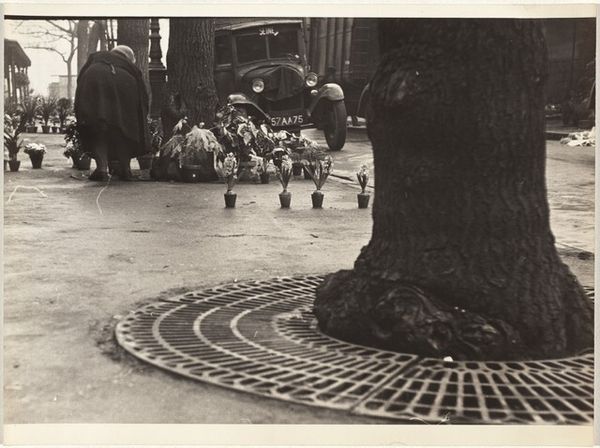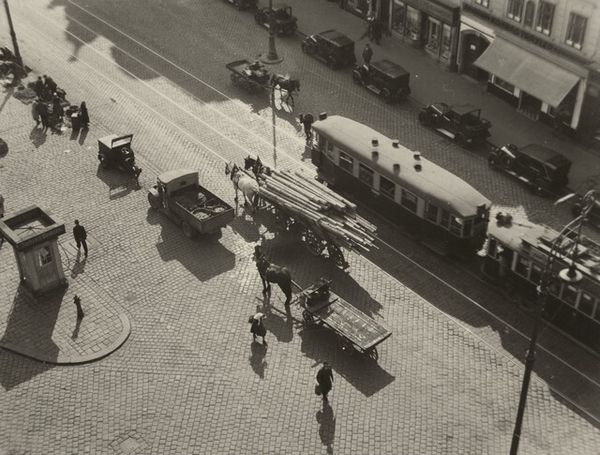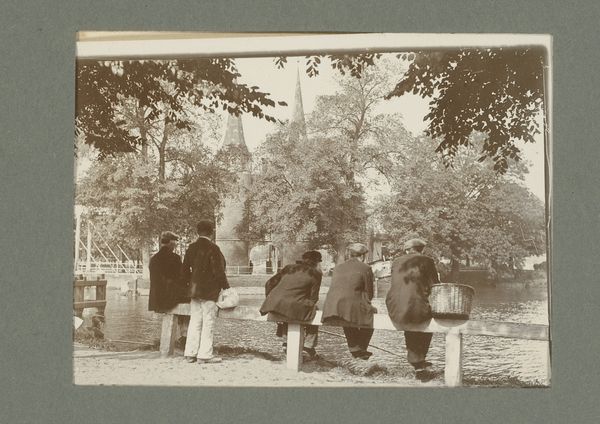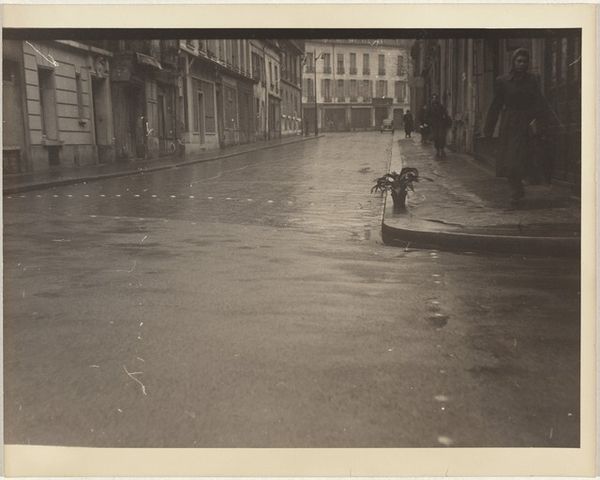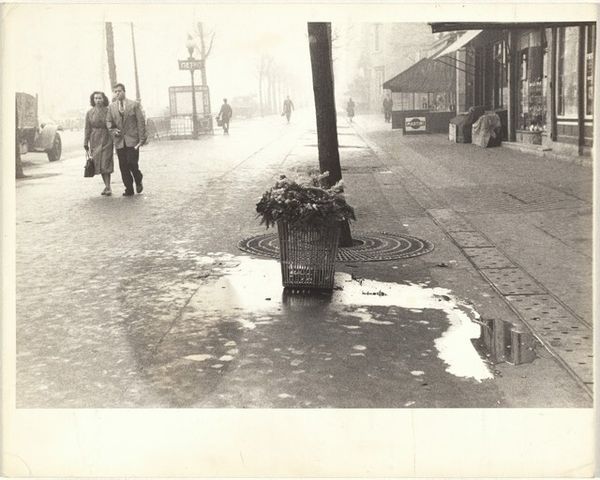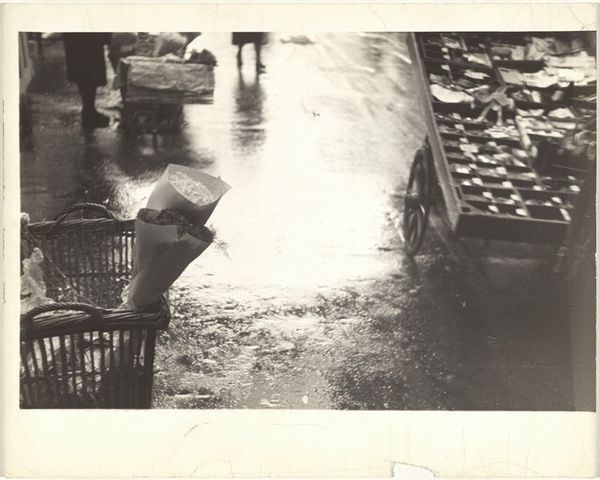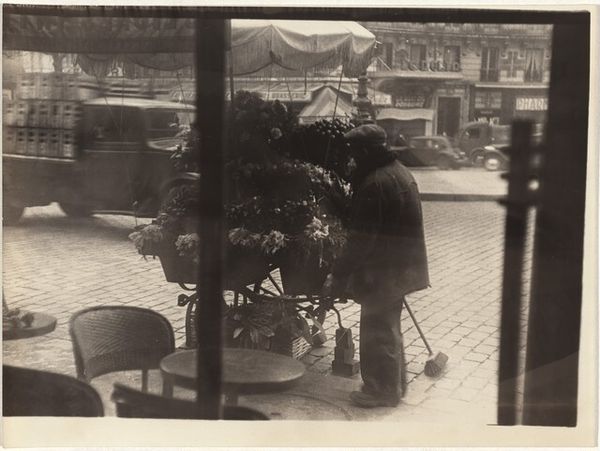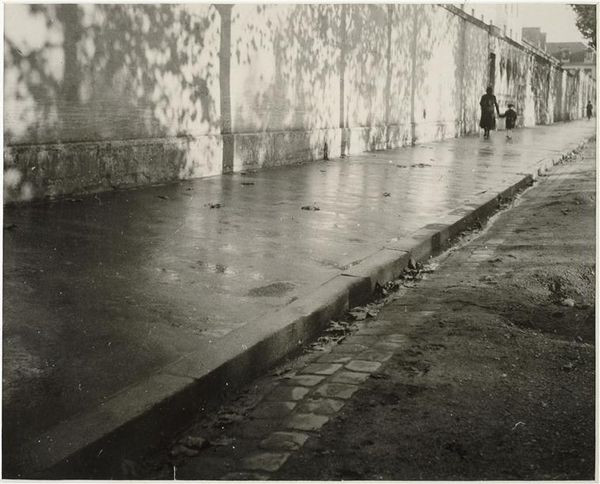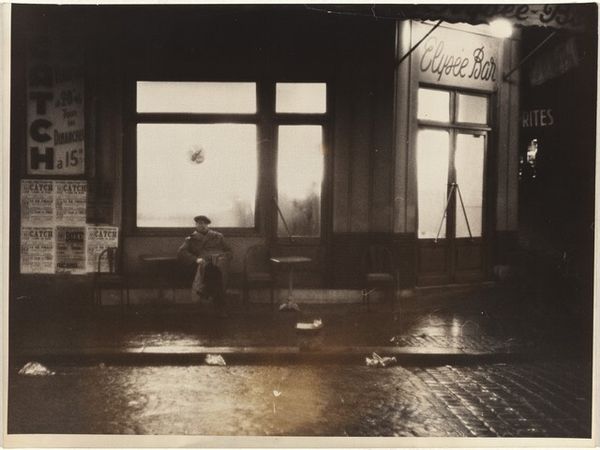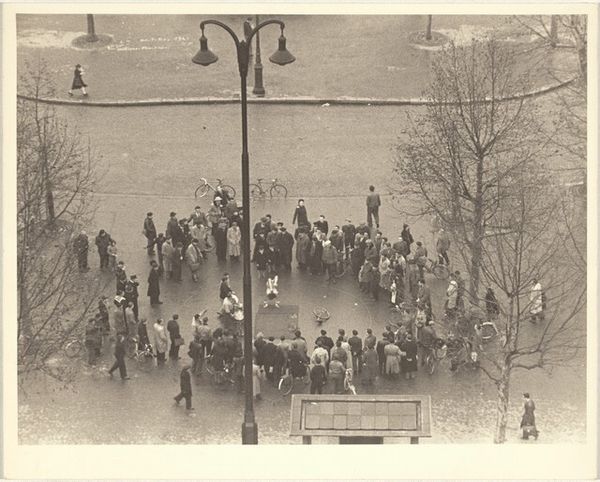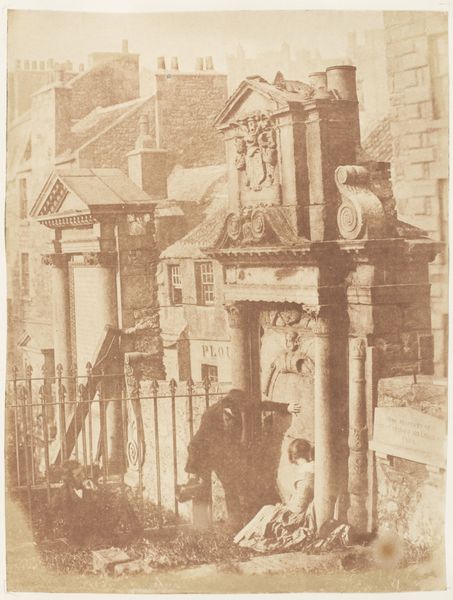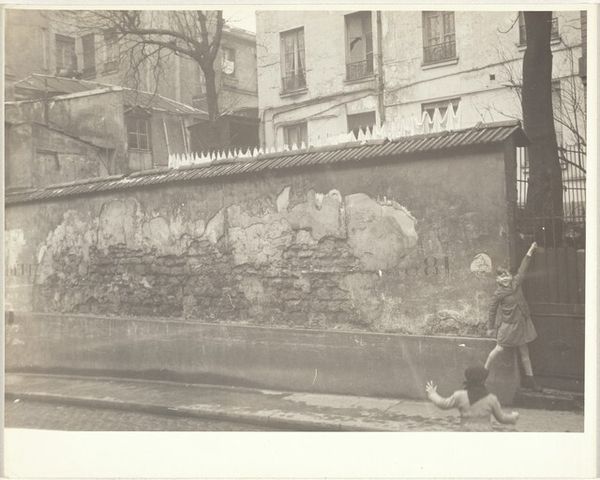
Dimensions: sheet (trimmed to image): 22.7 x 34.2 cm (8 15/16 x 13 7/16 in.)
Copyright: National Gallery of Art: CC0 1.0
Curator: Ah, yes, here we have Robert Frank’s “Place de la Republique,” captured in 1949. What's your immediate feeling when you see this photograph? Editor: Stark, isn’t it? The high-angle shot gives it this almost detached, observational feel. It's a bird's-eye view into everyday life, but somehow, it makes everything seem fragile, fleeting. Curator: It's interesting that you say fragile, because Frank was indeed fascinated by capturing the transient nature of postwar European society. He wasn’t going for the grand monuments; he was looking at the little details, the everyday rhythms of people. The cobblestone, the lone tree... they tell stories. Editor: Absolutely. It feels deliberately anti-monumental, a conscious sidestepping of the traditional heroic representation of city life, particularly after the Second World War. Look how the composition places us, the viewer, in a position of power. It raises questions about who has the right to look, to observe, to record history. It brings forward this slightly discomforting feeling that everything and everyone is being watched and somehow insignificant. Curator: I completely get that sense of detachment. Frank wasn’s necessarily trying to create something beautiful. It feels more about honestly reflecting the atmosphere of the period. It’s also crucial to keep in mind the accessibility this offers to viewers who felt they would otherwise have limited opportunities for observing such pieces of art. Editor: And there's something almost intrusive about it, but in a way that demands attention. How much have our ideas of photography and city-life evolved and morphed because of pictures like this? Curator: Significantly, I think. Frank challenged conventional ideas in so many levels, by taking photography beyond studio environments, experimenting with composition and light and making art become closer and closer to regular everyday-life experience. He was truly a revolutionary in his genre, by letting the art itself be a question, without clear cut and clean responses. Editor: Indeed, it feels very radical to witness art at its purest. Thanks for sharing your thoughts on Frank’s piece! It made my encounter with “Place de la Republique” a more nuanced one! Curator: And thank you for helping to bring the photograph to life, and sparking insightful inquiries! It’s a joy to reflect together.
Comments
No comments
Be the first to comment and join the conversation on the ultimate creative platform.

